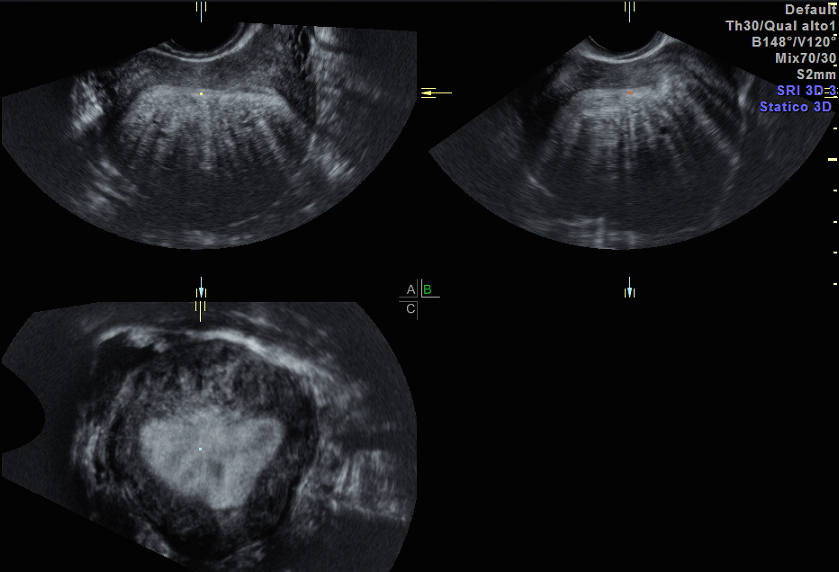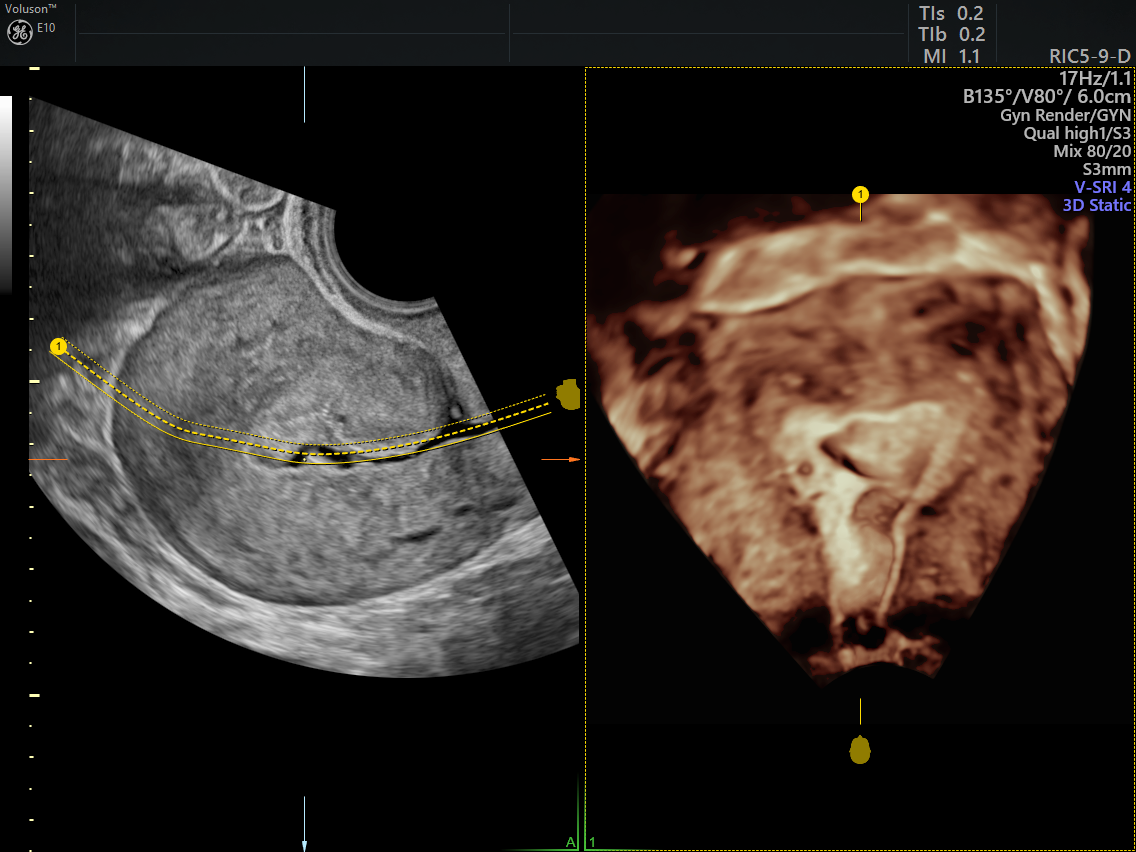The connection between adenomyosis and infertility has been more solidly established in recent years thanks to improvements in ultrasound imaging. While adenomyosis mainly affects women over age 35, it can also affect younger women and often occurs together with endometriosis.
In endometriosis, endometrial tissue starts to grow outside the endometrium and into the muscle layers of the uterus and other organs; in adenomyosis, the endometrium grows into the myometrium. Symptoms of adenomyosis and endometriosis can be similar, including dysmenorrhea, pelvic pain and dyspareunia.
Some of the characteristic signs of adenomyosis, including changes to the endometrial-myometrium interface, or junctional zone (JZ), can put a patient at risk for fertility problems. Clinicians should be aware of the relationship between adenomyosis and infertility so they can offer patients the best possible care.
Diagnosing Adenomyosis
The journal Geburtshilfe und Frauenheilkunde reports that since there formerly was no definitive method of diagnosing adenomyosis, estimates of its prevalence vary as widely as 5 to 70 percent. In the past, a pathologist would diagnose adenomyosis by evaluating a specimen obtained during a hysterectomy. Today, ultrasound technology allows for diagnosing adenomyosis in the office. A classic sign of adenomyosis that can be easily identified on ultrasound is the fan-shaped shadowing seen in the image below:

3D ultrasound of diffuse adenomyosis with fan-shaped shadowing
Ultrasound imaging provides a clearer picture of changes to the junctional zone, such as thickening or irregularity, and can provide a more accurate means for diagnosis. A 3D ultrasound sweep in particular offers a clear view of the coronal plane, including the JZ.

Ultrasound utilizing OmniView to demonstrate heterogenous JZ
How Adenomyosis Affects Implantation and Endometrial Receptivity
Adenomyosis can interfere with the process of in vitro fertilization (IVF) by disrupting implantation. According to a prospective study reviewed by Acta Obstetricia et Gynecologica Scandinavica, an increased myometrial thickness, thought to be due to a thickened JZ, is associated with IVF implantation failure. More research is needed to clarify the connection between implantation and changes to the JZ, but the journal noted that even thickening of the JZ below 12 mm (the cutoff for a formal diagnosis) may have a negative effect on implantation rates.
With or without IVF, the condition affects implantation by changing the expression of molecules that affect endometrial receptivity. Obstetrical and Gynecological Survey details how adenomyosis causes integrins, a type of adhesion molecule, to be expressed abnormally. Leukemia inhibitory factor (LIF) and expression of the gene for embryonic development HOXA 10, both associated with endometrial receptivity, are lower in women with adenomyosis.
Other Explanations for the Link Between Adenomyosis and Infertility
There are other mechanisms by which adenomyosis and fertility may be connected. Obstetrical and Gynecological Survey reports that anatomical distortion of the uterine cavity may affect fertility, possibly by obstructing the tubal ostia and interfering with the migration of sperm and embryo transport. An irregularly enlarged uterus can be another ultrasound marker of adenomyosis.
A thickened junctional zone may further impair fertility by disturbing the peristaltic contractions that transport oocytes and sperm. With adenomyosis, hyperplastic muscular tissue can cause increased intrauterine pressure and dysfunctional uterine hyperperistalsis. Abnormal nuclear and mitochondrial shapes and myelin bodies in the myometrium could also affect normal contractions of the uterus and impede uterotubal transport.
Finally, adenomyosis may trigger an abnormal inflammatory response. Obstetrical and Gynecological Survey reports that people with adenomyosis were found to have a greater density of macrophages, which produce proinflammatory cytokines and reactive oxygen species that can be toxic to developing embryos. The inflammatory cytokine IL-6 can lead to changes in progesterone and estrogen receptor expression, including estrogen receptor-α, which alters receptivity.
Understanding how adenomyosis and infertility are related can help clinicians inform their patients of all possible treatment options. Establishing an accurate diagnosis with ultrasound may be the first step in your patients' fertility journey.




